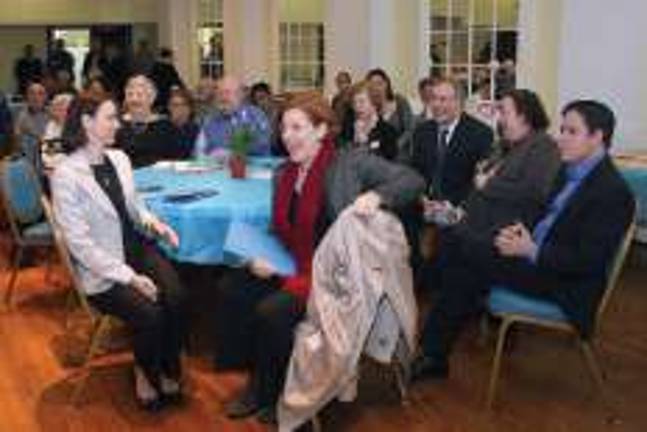Night of 1,000 Electeds at East 60s Meeting

Last Sunday, dozens of Upper East Siders braved the icy rain to attend the annual East Sixties Neighborhood Association (ESNA) meeting, coming together to hear from a slew of elected officials and talk about the big issues facing their neighborhood in the coming year. City Council Members Jessica Lappin (who reps the eastern portion of the district) and Dan Garodnick (who reps the western part) both came out to support the work of ESNA, as did State Sen. Liz Krueger, Assembly Member Micah Kellner, Council Speaker Christine Quinn and Manhattan Borough President Scott Stringer, who was the event's keynote speaker. At the last minute, Rep. Carolyn Maloney swung by to congratulate the organization and the board. "This is really such an important organization that works so hard for the neighborhoods of the East 60s, and this is certainly an exciting time for the Upper East Side," Maloney said. "The East 60s is certainly a gateway to the East Side from Queens, Long Island and Roosevelt Island." She mentioned the upcoming construction of the Cornell/Technion campus on Roosevelt Island and the fact that the East Side is home to an increasing number of tech companies. Maloney also touted the East Side's abundance of hospitals and said she's trying to get New York state to create a high-tech zone in the city for those hospitals to develop new technology and use it right there. Stringer, who is an Upper West Side resident but lived for a brief time on East 85th Street near Second Avenue, focused his speech on transportation, explaining his recently announced ambitious plan to reorganize the MTA's funding structures. Using the Second Avenue Subway as a jumping-off point, Stringer launched into an explanation of his vision that would bring back the defunct commuter tax and use that money to help permanently fund a five-borough transit system, theoretically without constant fare hikes. "We need to expand the system, but it cannot be on the backs of working people," Stringer said. He also praised ESNA members for looking at the big picture in terms of what's good for the city. "One of the great parts of what ESNA is all about is you think locally and act globally," he said. Barry Schneider, president of ESNA, spoke about some of the group's ongoing projects and what they have their eyes on. ESNA has a group of 13 certified tree pruners who attend to local tree pits, and is hoping to get more volunteers to expand their territory. Schneider also petitioned the crowd for anyone with a spare $12 million to fund the rehabilitation of the pier at Andrew Haswell Green Park. "If you have $12 million, we'll name that park after you. We'll even put in neon, which is against the city code, but we'll get around it," he joked. He also encouraged ESNA members to get involved in Community Board 8 and pointed out the major projects residents should be aware of, like the Roosevelt Island tram station's upcoming repairs and what major local buildings have changed hands. Schneider said that the group will have a full plate in the coming year and will probably focus a lot of energy on transportation and construction issues. Each of the event's speakers agreed on one thing: that ESNA is a model community group. Schneider said it just takes a little commitment from everyone to make an outstanding contribution. "We're a volunteer organization. We get together because we think we can make a difference in the community," he said.